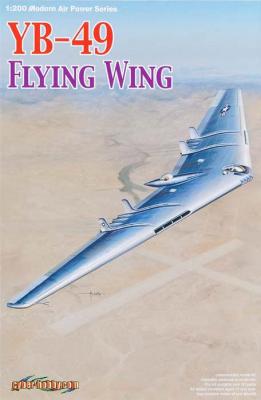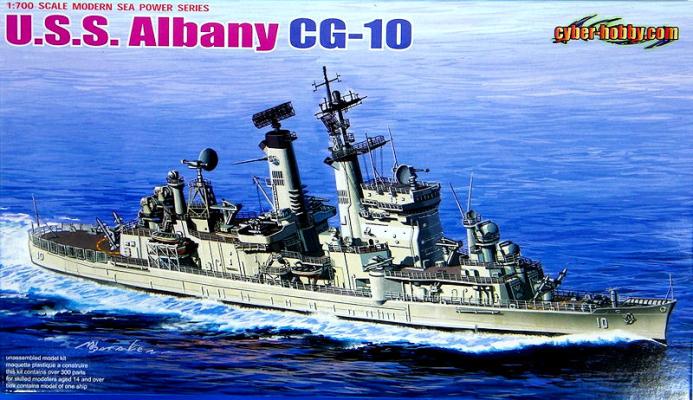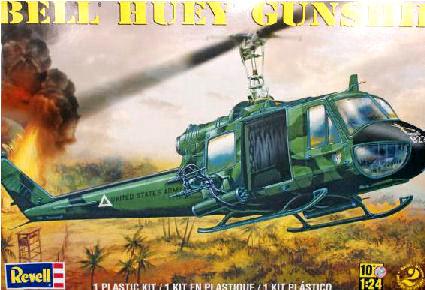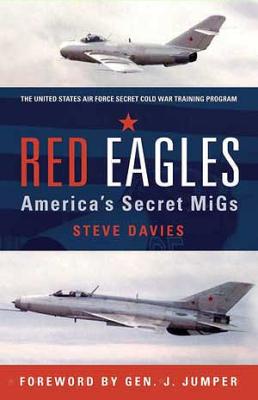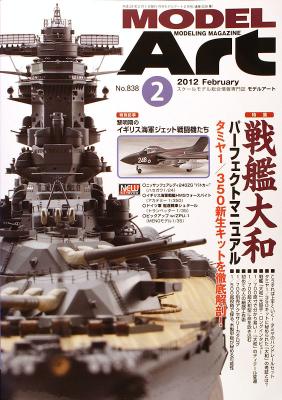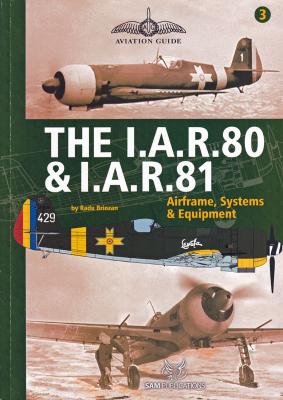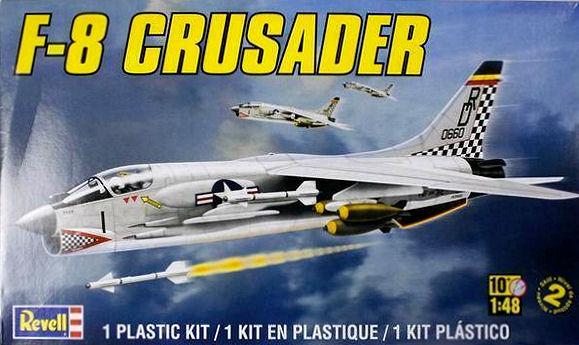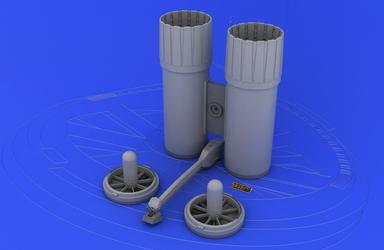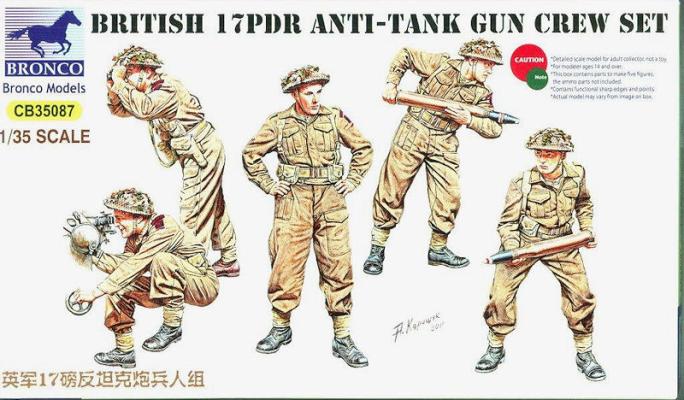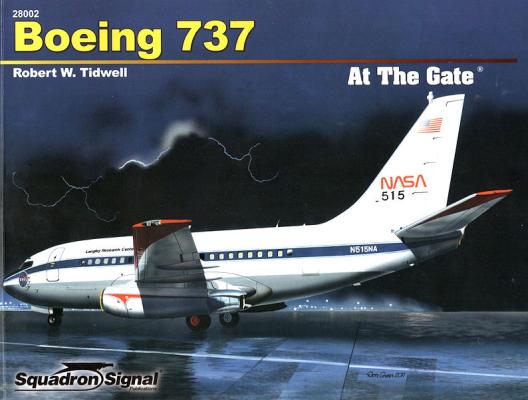Designed by Jack Northrop and built by his company, the YB-49 symbolized the culmination of his work with flying wing designs that began with the N-1M when he started his company in 1939. There were a total of three of these aircraft that actually took to the air, two YB-49s and a single YRB-49A. All were converted from XB-35 airframes, trading in the four Pratt and Whitney R-4360 engines and counter-rotating propellers for eight Allison J-35-A-15 jet engines on the YB-49, or in the case of the YRB-49A, six Allison J-35-A-19 jet engines. The aircraft was 172 feet across, 53 feet 1 inch in length, and stood 15 feet 3 inches tall.
What's New
Originally commissioned in 1946 as an Oregon-class heavy cruiser, USS Albany (CA-123) was converted to the world’s first guided missile cruiser between 1958 and 1962 and redesignated CG-10. She served in various roles until her decommissioning in 1980, when she was sold for scrap.
CyberHobby’s 1/700 rendition of CA-10 is a beauty! Seven sprues of exquisitely molded gray styrene, plus the 2-piece waterline hull and stand base greet the modeler upon initial opening of the box. To sweeten the deal, CyberHobby tosses in a fret of well-executed PE detail for superstructure railings, search radar, and other delicate items. A small, well-printed, but jam-packed, decal sheet round things out.
Thanks once again to our friends at Revell for re-releasing the largest static Huey model kit once again and providing IPMS/USA a copy to review! We certainly appreciate the opportunity…
A bit of history: This kit is a re-release of the former Monogram 1/24th UH-1B “Visible Huey.” Originally released in 1970, it is said supposedly to have been a one-time run due to low sales. That’s sad, because it’s a really great kit of a great aircraft, and the operating features actually worked well. I have provided pictures of my built-up visible Huey next to the new release version for those of you who have not seen one. (It is not for sale, and many parts shown are NOT in the review kit….I provide these pictures for comparison only). I’ve seen these go for over $600 as collector items.
During the Vietnam War, it became apparent that the tactics used by American pilots were not working well. An effort was made to analyze all US vs. MiG engagements, which became known as the Red Baron reports. The study recommended that Dissimilar Air Combat Training (DACT) was needed and, further, that the Air Force needed to give its fighter pilots realistic training with enemy aircraft or realistic substitutes. Aggressor squadrons were formed, assembled and put to use training and flying T-38s and F-5s to provide the Air Force fighter pilots DACT training. The Navy also formed TOPGUN as an Adversary training squadron to do this same training. The last part of the Red Baron recommendations did come about with the acquisition of MiG assets and American pilots to fly them in realistic training with CONSTANT PEG. The American pilots flew as members of the 4477th Test & Evaluation Flight and became known as the Red Eagles.
ModelArt No. 838 monthly update features new kits of the iconic Imperial Japanese Navy (IJN) battleship Yamato, as well as the usual new kit reviews and features. Pages 7-49 illustrate five new Yamatos ranging from 1/150 to 1/700 scale. Each model shows new aftermarket details, photoetch sets, and how to use them. Tamiya 1/350 1945 version, Fujimi 1/700 20in version, Tamiya 1/700 Leyte Gulf version, a scratchbuilt 1/150 full hull model, and Fujimi 1/500 1941 with wood deck are featured. Yes, that is right – Fujimi came out with a what-if version of Yamato with twin 20in gunned main turrets replacing the usual 18in turrets, and a new AA fit, including 100mm turrets, 40mm Bofors and quad 20mm mounts. Now you can get a model of Yamato in every modification, even one that never was. The text is in Japanese, but the numerous photographs help decipher what is being done.
The usual features follow:
I’ve loved the looks of the I.A.R.80 since the LTD model came out. There is something about the look of the airplane that makes it look like the Hughes racer. It is sleek and sexy and relatively unknown in the western world.
Prior to this book, there have been very few references available on the I.A.R.80. There was a book published in Rumanian, and later French, I.A.R.80 – The History of an Unknown Fighter, which is very good. I have a copy and the photos make it worth the price of admission. However, I can’t read it. This book by noted Rumanian aviation historian, Radu Brinzan, fixes that.
This kit is a re-release, complete with raised lettering on the underside of one stabilizer showing the 1988 date. The decals are new. It is highly recommended as the next kit for a younger modeler ready to move up from snap-together kits.
The kit shows its age in the uncomplicated engineering, raised panel lines, and very simple cockpit – but it is a true delight to build. 62 parts come in the box, and there are two options, one Navy and one Marine Corps. The instructions show the Navy version with Sidewinder missiles and the Marine version with 6 roughly 500 lb pound bombs. The in-flight refueling station can be built closed or with probe extended. The instructions are clear and easy to read – with one exception. A list of parts and color guide is included, though no call-outs for any particular brands.
When Eduard started their "Brassin" series of detail parts, they really raised the bar for aftermarket detail manufacturers. Burner cans and exhausts, regardless of the scale, have always been an area that was badly in need of assistance, even with kits like Tamiya's F-4J Phantom. That seam down the middle of tubular structures has always been a modeler's nightmare. Eduard's Brassin series has done a fantastic job of taking care of that problem and has taken even resin casting to a new level.
This set consists of 5 figures, all conducting loading and firing of the 17 pdr AT Gun. The figures come on two sprues with 48 parts. The box art and instructions on the back of the box show the figures as completed. The first figure is watching what is going on, the second is the observer using a pair of binoculars, the third is holding a ready round, the fourth is ready to load the gun, and the fifth is the crew member aiming the gun. The poses are well done and depict a reasonable amount of action.
Thanks to Gary Newman of Squadron/Signal Publications and to IPMS/USA for giving me the opportunity to review this delightful overview of one of the standard airliners flying today. The book is written by Robert W. Tidwell and is lavishly illustrated with wonderful examples of 737s around the world. Each page has one or more color photos, superb Don Greer renderings, line drawings by Melinda Turnage, or aircraft version specs. I reviewed the softcover edition. The photography is excellent throughout and they are all color. The “At the Gate” series concentrates on commercial or private aircraft and is similar to the “Walk Around” series, also by Squadron/Signal.

